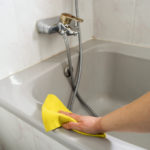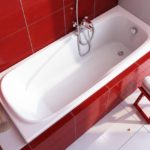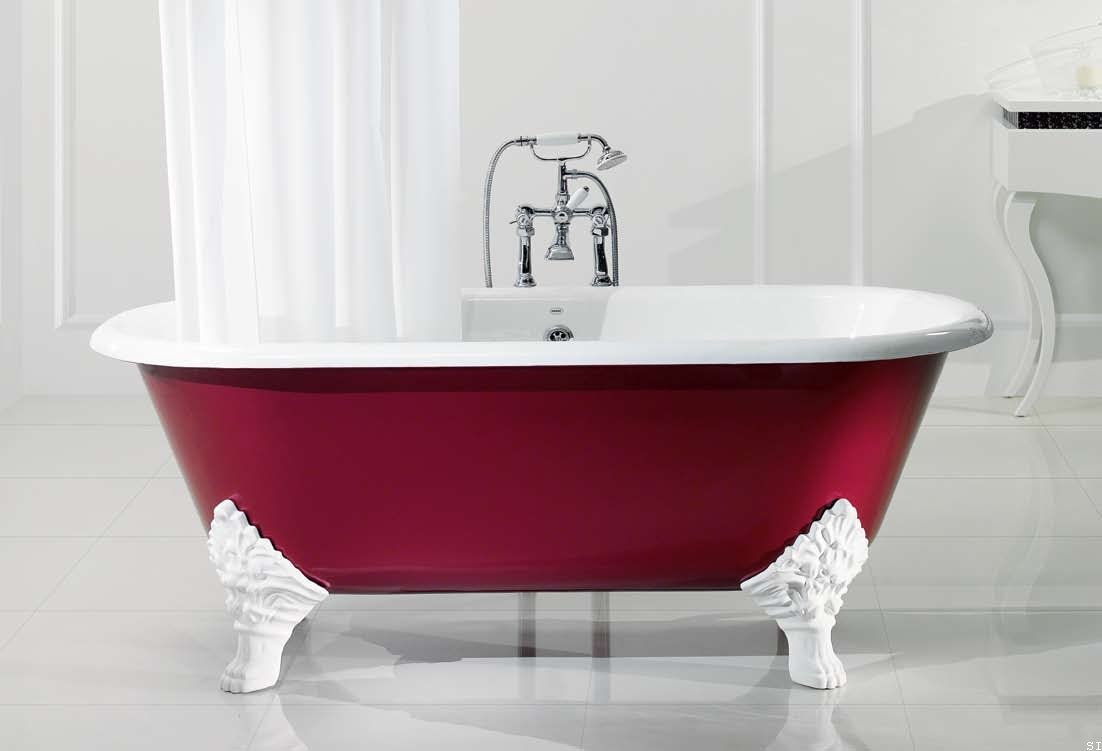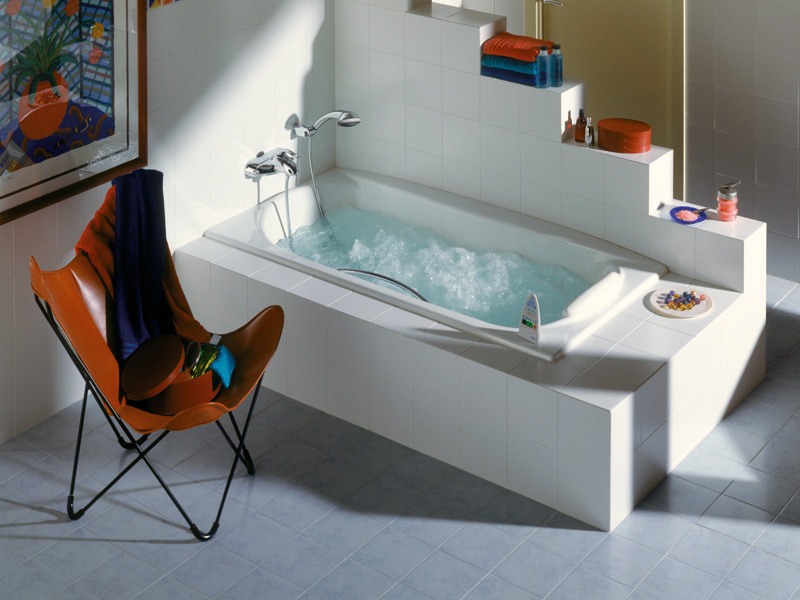How to whiten a bathtub?
New plumbing fixtures, especially white ones, always have a presentable appearance and are pleasing to the eye. But time passes, and stains of dirt, rust, and salt deposits appear on its shiny surface. What to do about it? Of course, fight.
The content of the article
Why do plaque and dirt appear?
This happens mainly for two reasons:
- the presence of various impurities in the water “reaching” your home or apartment;
- violation of the rules for using plumbing equipment.
Limescale (stone) – an insoluble compound of carbonic acid and calcium salts. It gets onto the enamel along with water containing chalk, limestone, dolomite and other natural minerals, and industrial waste residues. After evaporation, moisture appears in the form of crystals.
Rust – “product” of the oxidation of iron and alloys containing it. External networks of hot and cold mains are usually made of metal that is susceptible to corrosion. And since their age is sometimes estimated at tens of years, it is not surprising that not only the external, but also the internal surfaces of cold and hot water supply pipes become covered with rust. And all this “charm”, along with tap water, flows into your snow-white bathtub.
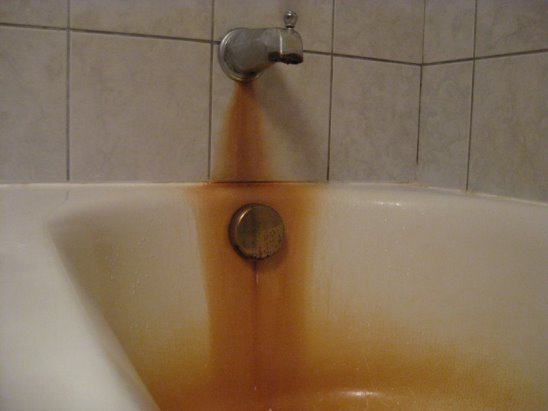
Yellowness – these are not always the consequences of contact of enamel with rust.The reason for this may be the high content of organic substances in running water that entered it as a result of the decomposition of plants and animals, which the purification filters could not cope with. Such water usually also has an unpleasant odor, since it contains harmful microorganisms that can cause intestinal infections and even severe poisoning.
Regular dirt appears when the plumbing product is not properly cared for. Particles of sand and earth, “brought” on the hands and feet, clothes (and even shoes - some individuals, not thinking about the consequences, manage to wash them in the bath), settle on a smooth surface and are gradually absorbed into it. This also includes dead skin cells that were not washed off in time, detergents, fats, paint, etc.
Can lead to disastrous consequences thoughtless use of aggressive cleaning products widely advertised on television. For acrylic bathtubs, for example, the use of hard brushes and abrasive powders is unacceptable. If you do not take into account the type of product, instead of the expected positive effect, you can ruin even a new good thing.

Safety rules for bleaching bathtubs made of various materials
In order not to harm the beauty of your plumbing and your health, you need to:
- carefully study the characteristics of the bathtub, first of all, the features of the material from which it is made;
- select the appropriate cleaner;
- protect your hands and respiratory system from harmful effects, because if a product can whiten a bathtub, imagine what it can do to your skin.
Reference! Acrylic is the most “delicate” of materials. It does not tolerate exposure to abrasive particles, acids and high concentrations of alkali. Enameled bathtubs come in cast iron and steel.They are more “resistant” than acrylic ones, however, when whitening them, it is also important not to overdo it with preparations and devices.
If you have already decided on the type of your bath and found a suitable composition, the steps should be approximately as follows:
- carefully read the instructions on the packaging of purchased bleach or look at several online sources when it comes to folk remedies, so as not to be mistaken with the proportions and processing time;
- put on a respirator (if chlorine fumes are expected) or a wet gauze bandage (for working with powder preparations) and be sure to wear protective gloves;
- Apply the required amount of cleaner to the bathtub, spread it with a soft brush, sponge or cloth over the entire area of contamination (for prevention purposes, you can simply spread it over the entire area);
- allow the reagent to interact with the surface being cleaned, but no more than the time specified by the manufacturer (or common sense);
- rinse thoroughly with clean water;
- wipe dry (preferably).
By the way! If possible, it is better to do without abrasive substances, which, although to varying degrees, still disrupt the structure of the surface of both enamel and acrylic.
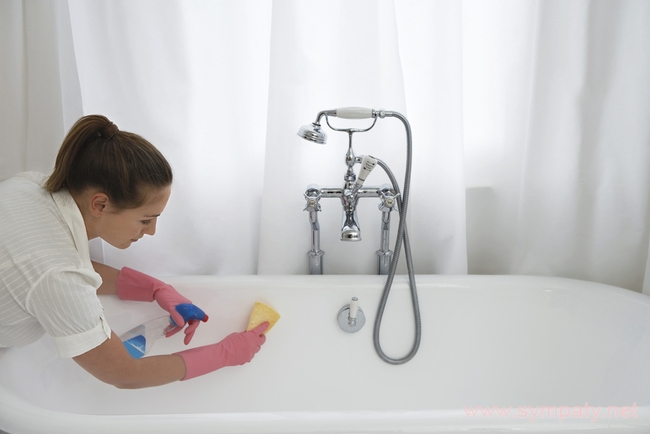
Whitening methods
To clean your bathtub white at home, you can use folk methods or chemical compounds specially synthesized for this purpose and available for free sale.
Home remedies for whitening
They are quite effective and also have some advantages:
- natural base;
- relative safety of use.
The bathtub must be kept clean daily. To do this, just walk over it with a soft damp cloth rubbed with laundry soap, then rinse with water and wipe dry.Such gentle treatment, which will take no more than 5 minutes, will not only clean, but also disinfect the surface and prevent the appearance of serious contamination.
At the first appearance of limescale or other problems, treat the product with a solution of vinegar or lemon juice. For acrylic bathtubs, the concentration in water should be lower (approximately 1:5), exposure time – 20-30 minutes.
Mixtures for removing rust stains from enamel bathtubs:
- salt and vinegar 1:1 can be spread and left for several hours - this will eliminate not only rust, but also yellowness;
- ammonia and hydrogen peroxide in equal proportions (for cast iron);
- Apply 2 parts salt and 1 part turpentine to stains for 30 minutes, then rinse with warm water.
To remove limescale:
- Soda slurry (if there are a lot of deposits, You can add soda ash to baking soda) lightly rub into the surface for half an hour, then rinse thoroughly.
- Apply a solution of citric acid (1 sachet per 0.5 liter of water for acrylic, 2 for enamel) onto the walls using a sponge or sprayer (you can do this several times at intervals of 10 minutes). The total contact time with the surface is from half an hour (acrylic) to an hour (enamel). At the end of the procedure, rinse the bath with warm water and wipe with a dry cloth.
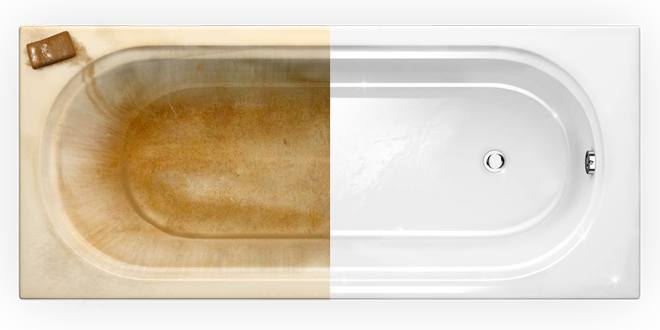
Household chemicals
Manufacturers offer an impressive range of cleaning products and detergents specifically designed for cleaning and whitening bathtubs.
Optimal for acrylic:
- Acrylan - foam, washes away detergent residues and salt deposits;
- Profi team – removes yellowness;
- Mr. Profi – spray against dirt, plaque and fungus;
- Sanox in the form of a gel, spray or foam – cleans and disinfects;
- Sanelit is effective in the fight against rust, lime deposits, soap stains and mold.
For cast iron and steel bathtubs coated with enamel, in addition to the above reagents, you can use:
- Cif cream;
- Comet (gel);
- Sillit Bang;
- Luxus Professional.
If there are allergy sufferers in the house, you should pay attention to Synergetic and Frosch preparations. They are made on the basis of natural biodegradable components and do not cause harm to the human body.
Attention! You can use household chemicals no more than once a week. When using these products, strictly follow the instructions.
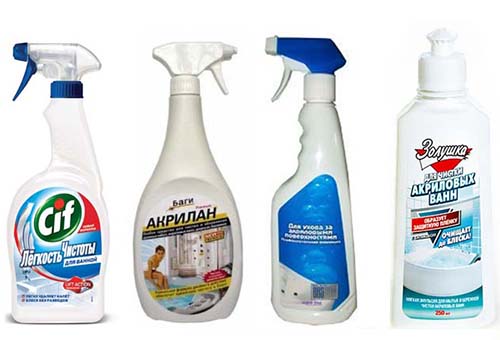
What to do if you can’t bleach?
There are situations that are so advanced that not a single remedy can help cope with dirty and yellowed plumbing fixtures. This can happen not only through your fault - such a “gift” can come from the previous owners, for example, when buying an apartment on the secondary market. You have three options:
- try to restore damaged enamel. In this case, it is better to seek the help of specialists;
- buy a new bathtub, if funds allow;
- order an acrylic liner. It will cost less than replacement, taking into account the costs of associated repairs.
Preventing contamination of a snow-white bath
- Clean the tub after each use with soap and water.
- If there is poor ventilation in the room, wipe the bathtub dry, especially those places where water accumulates (bottom, recesses on the sides).
- Fix all leaks in faucets, showers, close the tap all the wayso that water does not ooze or drip onto the enamel, creating “pockets” of contamination.
- Avoid damaging the enamel, which can be caused by mechanical stress and extreme temperatures (boiling water, ice). Small chips and cracks disrupt the smooth structure and become a “haven” for bacteria and microbes.The area of “damage” in such places will gradually expand.
Wear and tear of the bathtub surface over time is inevitable. However, with proper care you can extend its service life as much as possible. Dirt and germs can gradually ruin not only the appearance of the bathroom, but also cause irreparable harm to the health of the entire family. Take proper care of your bathroom and it will always be clean, beautiful and safe.


